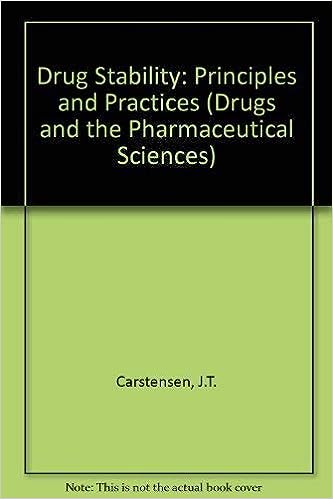Tips for Adapting Stability Testing Programs for Multinational Compliance
Introduction
Pharmaceutical manufacturers operating in global markets must navigate a maze of regulatory requirements for stability testing. While frameworks like the ICH Q1A(R2) provide harmonized guidelines, regional agencies such as the FDA, EMA, and ASEAN introduce unique conditions and expectations. Adapting stability testing programs to meet multinational compliance is a critical step for achieving regulatory approval and ensuring product quality across diverse markets. This article offers practical tips and tricks for tailoring stability programs to satisfy global regulatory demands efficiently.
1. Understand Core Regulatory Frameworks
The foundation of any
- ICH Q1A(R2): Provides a harmonized approach to stability testing for new drug substances and products.
- FDA Guidelines: Emphasize robust long-term and accelerated testing for the U.S. market.
- EMA Guidelines: Highlight packaging compatibility and stability under Zone II conditions for the European Union.
- ASEAN Guidelines: Focus on Zone IVb (hot and very humid) conditions for Southeast Asian markets.
By understanding these frameworks, manufacturers can design a comprehensive stability program that aligns with international standards and regional requirements.
2. Customize Stability Studies for Climatic Zones
Climatic classifications play a significant role in stability testing. Different regions fall under specific climatic zones, each requiring tailored storage conditions:
- Zone I: Temperate climates (e.g., Northern Europe).
- Zone II: Subtropical and temperate climates (e.g., U.S. and much of Europe).
- Zone III: Hot and dry climates (e.g., parts of Australia and the Middle East).
- Zone IVa: Hot and humid climates (e.g., Latin America).
- Zone IVb: Very hot and humid climates (e.g., Southeast Asia).
Tip: Conduct long-term stability testing under multiple climatic conditions if targeting diverse markets. For example, combine Zone II and Zone IVb studies to ensure compliance in both Europe and ASEAN regions.
3. Leverage Data from Accelerated Stability Testing
Accelerated stability testing provides critical insights into how products behave under extreme conditions, helping manufacturers predict long-term stability more efficiently. To maximize the value of accelerated testing:
- Ensure data meets the requirements of ICH Q1A(R2) and regional regulators.
- Use degradation trends observed during accelerated studies to design robust packaging solutions.
- Correlate accelerated data with real-time testing to extrapolate shelf life.
Tip: Employ predictive modeling tools to analyze accelerated stability data and forecast long-term behavior more accurately.
4. Address Regional Variations in Photostability Testing
Photostability testing evaluates how light exposure affects drug quality. While ICH Q1B provides a harmonized framework, regional agencies may have additional requirements:
- FDA: Requires photostability testing for all drug products but offers exemptions for light-protected formulations.
- EMA: Demands validated methods for assessing photostability and packaging compatibility.
- ASEAN: Recently mandated photostability testing for products marketed in Southeast Asia.
Tip: Use UV-blocking materials or opaque containers to mitigate photodegradation risks and meet global requirements.
5. Invest in Advanced Stability Testing Equipment
Maintaining precise temperature and humidity conditions is essential for reliable stability studies. To achieve multinational compliance:
- Upgrade stability chambers to accommodate varying climatic zone requirements.
- Ensure equipment meets calibration and validation standards set by regulatory agencies.
- Incorporate automated monitoring systems to detect deviations in real-time.
Tip: Choose chambers capable of simulating multiple climatic conditions to reduce the need for additional equipment.
6. Optimize Packaging for Global Markets
Packaging plays a crucial role in maintaining product stability. To ensure compliance across regions:
- Test packaging materials under region-specific conditions, such as Zone IVb for ASEAN markets.
- Evaluate the interaction between drug products and packaging components.
- Design packaging that protects against light, moisture, and oxygen.
Tip: Use globally recognized packaging standards to simplify regulatory submissions in multiple markets.
7. Streamline Data Management and Reporting
Managing stability data for multinational compliance requires robust systems. To improve efficiency:
- Adopt stability software for pharmaceuticals to centralize data collection, analysis, and reporting.
- Standardize reporting formats to meet the requirements of different regulatory agencies.
- Integrate electronic submission systems to expedite regulatory approvals.
Tip: Ensure data integrity by implementing secure systems that track changes and maintain audit trails.
8. Collaborate with Regulatory Experts
Engaging with experts familiar with regional requirements can help manufacturers navigate regulatory complexities. Key benefits include:
- Access to insights on evolving regulations.
- Guidance on designing stability studies that meet regional expectations.
- Support in addressing regulatory queries during submission reviews.
Tip: Partner with Contract Research Organizations (CROs) for specialized stability studies or multi-regional compliance projects.
9. Monitor Emerging Trends
The landscape of stability testing is continuously evolving, driven by technological advancements and regulatory updates:
- Predictive Analytics: Advanced modeling tools forecast stability trends, reducing the need for extensive studies.
- Automation: Robotic systems streamline sample handling and testing processes, improving efficiency.
- Sustainability: Eco-friendly practices, such as optimizing packaging materials and reducing testing redundancies, are gaining traction.
Tip: Stay updated on emerging trends to adapt stability programs proactively and maintain a competitive edge.
Conclusion
Adapting stability testing programs for multinational compliance is a complex but essential task for pharmaceutical manufacturers. By understanding core regulatory frameworks, customizing studies for climatic zones, and leveraging advanced technologies, companies can streamline compliance processes and ensure product quality across diverse markets. With proactive planning, expert guidance, and a focus on innovation, manufacturers can navigate the challenges of global stability testing with confidence.
